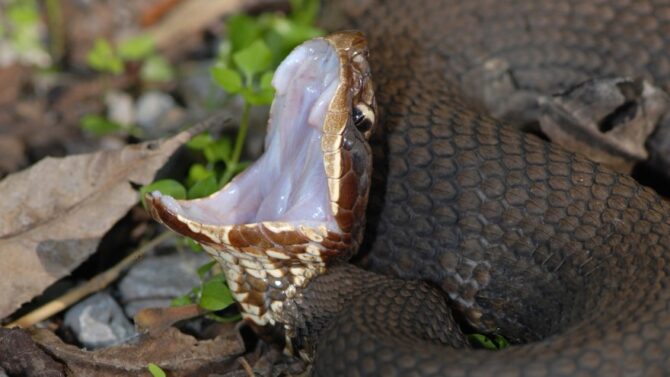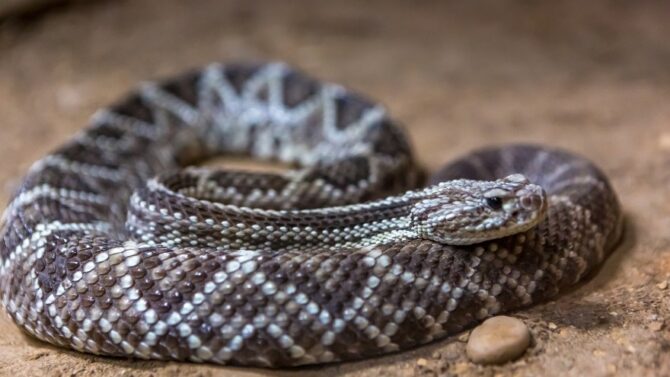Illinois is a fertile ground for many snake species, far more than many other states in the U.S.
There are swamps, lakes, ponds, marshes, forests, and grasslands amidst other habitats.
There are around 40 species living in Illinois, out of which only 10% are poisonous.
Venomous snakes in Illinois are timber rattlesnakes, copperheads, cottonmouths, and massasaugas.
Let’s explore each of these deadly reptiles in detail.
The Venomous Snakes In Illinois
1. Timber Rattlesnake (Crotalus horridus)
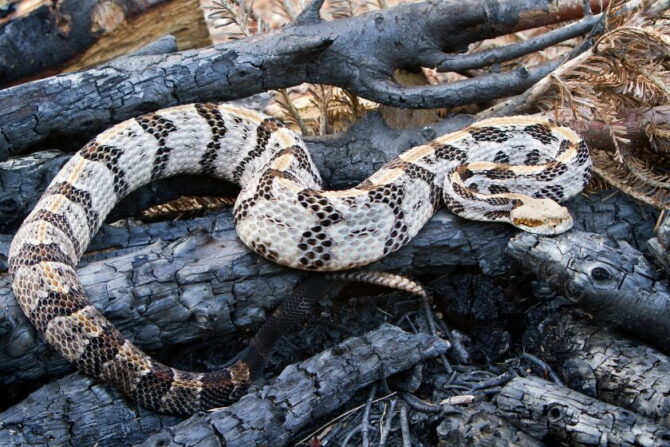
- Size: 36 to 60 inches
- Habitat: Deciduous forests, woodlands, rocky ledges
- Identifying Features: Black, yellow, brown, or black patterns
- Behavior: Docile, solitary
- Threats: Hemotoxin, neurotoxin
The timber rattlesnake is also named the banded and canebrake rattlesnake.
It can be found only in eastern North America, both in the United States and elsewhere.
The population in Illinois is regarded as endangered and protected.
It is considered illegal to kill a timber rattlesnake. You should rather avoid it lest it kills you.
The timber is highly venomous, with the bite being both toxic and painful.
Venom contains both neurotoxic and hemotoxic substances which affect the tissues and the nervous system.
The timber rattlesnake isn’t aggressive but won’t hesitate to bite if threatened.
Do not try to handle this snake, even if you find one injured. Best to contact the right authorities.
2. Eastern Copperhead (Agkistrodon contortrix)

- Size: 20 to 37 inches
- Habitat: Deciduous forests, mixed woodlands, swamps, rock outcroppings, lower river
- Identifying Features: Broad head, pale tan color, patterns like hourglass
- Behavior: Nocturnal, lying still
- Threats: Painful bites
The eastern copperhead is a native of North America, where it is endemic to the eastern side.
It is common in Illinois, specifically in the lower areas. Copperheads are easily recognized by their broad head, hourglass patterns, and tan color.
It is a beautiful snake, but one that should be marked and avoided.
Copperheads are deadly to their prey, and it is hard for the targeted animal to survive the venom.
However, the potency is often too weak to kill a human. The fatality rate from a copperhead is low, so the victim has a high chance of survival.
That being said, the bite is painful and would need medical attention.
It also causes negative effects like swelling and strong nausea. The muscle and bone tissue could be damaged as well.
These creatures hardly bite and would prefer avoiding humans to engaging. It threatens more and even gives a “dry bite” to drive off threats.
3. Northern Cottonmouth (Agkistrodon piscivorus)
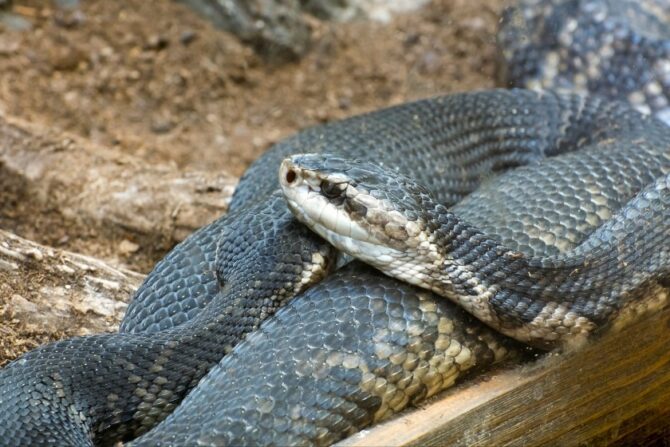
- Size: 26 to 35 inches
- Habitat: Creeks, streams, swamps, marshes
- Identifying Features: Broad head, black skin, patterns
- Behavior: Opening mouth, shaking tail, both diurnal and nocturnal
- Threats: Cytotoxin, venom yield 125mg, swelling, pain
Simply known as the cottonmouth or viper, this creature is native to the southeastern United States.
It is a semi-aquatic viper and an excellent swimmer, inhabiting swamps, marshes, creeks, and streams. In Illinois, it stays more in Jacksonville’s Carbondale.
Alternative names of the Northern cottonmouth include the water mocassin, swamp mocassin, and the black mocassin.
The cottonmouth is so named because of its threat display. To scare off a potential predator, the cottonmouth will open its mouth wide to reveal the white inside.
It is not as venomous as rattlesnakes but surpasses the copperhead in potency.
The bites are painful, cause swelling, and lead to tissue damage and even amputation. The fatality rate is low, but the snake should be avoided.
4. Eastern Massasauga Rattlesnake (Sistrurus catenatus)
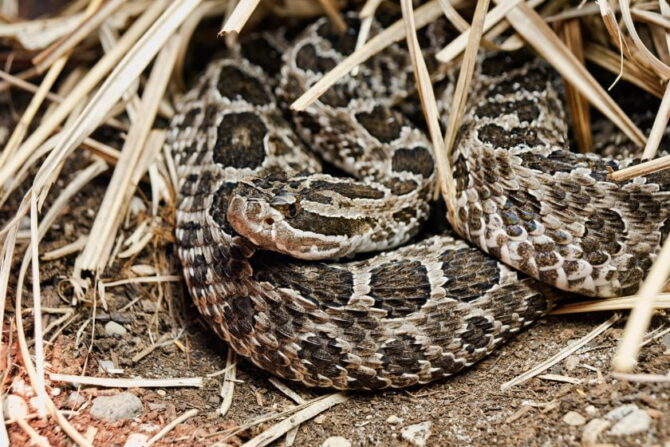
- Size: 24 to 30 inches
- Habitat: Swamps, marshes, grasslands
- Identifying Features: Grey or tan color, brown or black spots
- Behavior: Shy, avoidant
- Threats: Hemotoxin, cytotoxin
The eastern Massasauga rattlesnake is a native of North America, living in both Canada and the United States.
Just like other places, it is considered shy in Illinois. While other rattlesnakes will alert you to their presence by shaking the rattle on their tail, the massasauga hardly shakes its rattle.
This is likely because it doesn’t want to be spotted.
The eastern massasauga is not considered highly venomous, at least compared to other rattlesnakes.
However, this species is still dangerous and should be avoided. Its venom contains cytotoxin, hemotoxin, and some enzymes.
These substances destroy tissues and affect blood flow. Symptoms of the eastern massasauga include swelling and strong pain.
Final Thoughts
Illinois is a state teeming with wildlife, including a variety of snakes. The vast majority are non-venomous, so you only have 4 to look out for.
Amongst these venomous snakes in Illinois, the most dangerous would be the timber rattlesnake.
All of them should be avoided, and immediate medical treatment is required if someone gets bit.
